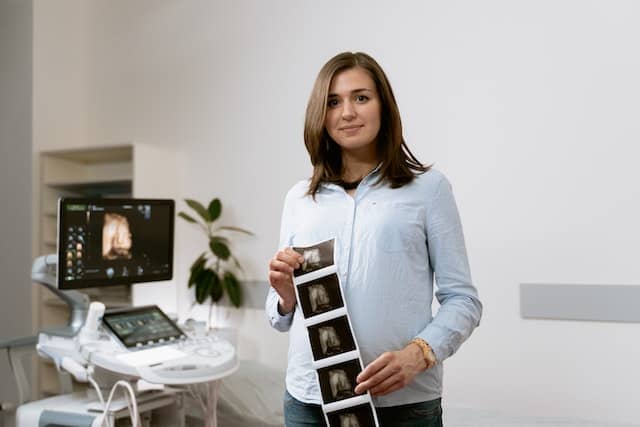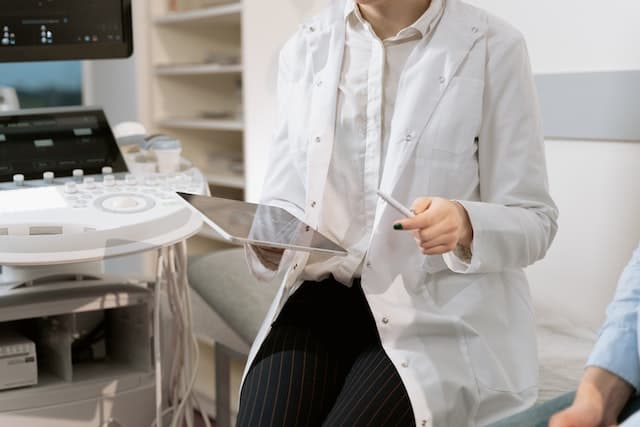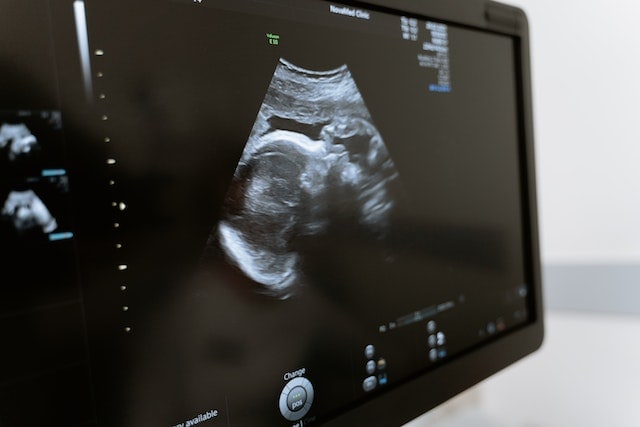Many expectant parents look forward to the day when they can see their baby’s face for the first time. Ultrasound technology has made it possible to get a glimpse of the developing fetus in the womb.
While traditional 2D ultrasounds are routine during prenatal care, some parents opt for a 3D ultrasound to get a more detailed look at their baby’s features.
Deciding when to get a 3D ultrasound is a personal choice that depends on various factors. Some parents want to see their baby’s face as early as possible, while others prefer to wait until later in the pregnancy when the baby’s features are more developed.
It’s important to understand the purpose of 3D ultrasounds, the procedure itself, and the potential risks before making a decision.
Key Takeaways
- 3D ultrasounds provide a more detailed look at the developing fetus than traditional 2D ultrasounds.
- The timing of a 3D ultrasound is a personal choice and depends on various factors.
- Understanding the purpose, procedure, and risks of 3D ultrasounds is important when deciding whether to get one.
Understanding Ultrasound Types
Ultrasound is a non-invasive medical imaging technique that uses sound waves to create images of internal organs and structures. There are several types of ultrasound scans, including 2D, 3D, and 4D ultrasounds. Each type of ultrasound has its own unique features and applications.
2D ultrasounds are the most common type of ultrasound scan. They produce two-dimensional images of the fetus or internal organs. The images are black and white and show the structure and shape of the object being scanned. 2D ultrasounds are used for routine prenatal care, as well as to diagnose and monitor medical conditions.
3D ultrasounds are a more advanced type of ultrasound scan that produce three-dimensional images of the fetus or internal organs. These images are more detailed and realistic than 2D images, and can provide a better understanding of the shape and size of the object being scanned.
3D ultrasounds are often used to diagnose fetal abnormalities and to monitor fetal growth and development.
4D ultrasounds are the most advanced type of ultrasound scan. They produce real-time 3D images of the fetus or internal organs, allowing the viewer to see the object in motion. 4D ultrasounds are often used for fetal imaging and to diagnose fetal abnormalities.
Ultrasound technology has come a long way since its inception, and modern ultrasound machines are capable of producing high-quality images with advanced features such as color Doppler and 3D/4D imaging.
Ultrasound scans are safe, non-invasive, and painless, making them an ideal diagnostic tool for a wide range of medical conditions.
In summary, ultrasound technology has advanced significantly over the years, and there are several types of ultrasound scans available today. 2D ultrasounds are the most common type of ultrasound scan, while 3D and 4D ultrasounds are more advanced and produce more detailed images.
Ultrasound scans are safe, non-invasive, and painless, and are an important diagnostic tool for a wide range of medical conditions.
When to Get a 3D Ultrasound
A 3D ultrasound is a type of medical imaging that uses sound waves to create three-dimensional images of the fetus in the womb. It is a safe and non-invasive way to get a more detailed look at the baby’s development.
While 3D ultrasounds are not necessary for routine prenatal care, many parents-to-be opt to get one to get a better view of their baby.
The best time to get a 3D ultrasound is typically between 26 and 32 weeks of pregnancy. At this stage, the baby has developed enough fat under the skin to create more defined features, but is not yet so large that it is difficult to get a clear image.
However, some facilities may offer 3D ultrasounds as early as the first trimester, or as late as the third trimester.
It is important to note that while 3D ultrasounds can provide a more detailed look at the baby, they are not a substitute for regular prenatal care. They should be used as a supplement to regular ultrasounds and other prenatal tests, not as a replacement.
Additionally, the due date or estimated due date of the baby may also be a factor in when to get a 3D ultrasound. If the due date is uncertain or if there are concerns about the baby’s growth or development, a 3D ultrasound may be recommended at an earlier or later stage of pregnancy.
Overall, the decision to get a 3D ultrasound is a personal one and should be discussed with a healthcare provider. It is important to choose a reputable facility that uses safe and reliable equipment, and to follow any instructions or precautions provided by the healthcare provider.
The Purpose of 3D Ultrasounds
3D ultrasounds are a type of medical imaging technique that uses sound waves to create three-dimensional images of the developing fetus. The purpose of a 3D ultrasound is to provide a more detailed view of the baby’s facial features, organs, and overall development than traditional 2D ultrasounds.
During pregnancy, 3D ultrasounds can be used to monitor fetal growth and development, detect abnormalities or birth defects, and determine the gender of the baby. In addition, 3D ultrasounds can provide valuable information about fetal cardiac activity and help healthcare providers diagnose and treat any potential issues.
One of the primary benefits of 3D ultrasounds is the ability to see the baby’s facial features in more detail. This can be a very exciting experience for expectant parents, as they can see their baby’s face and get a better idea of what their child will look like.
However, it’s important to note that 3D ultrasounds are not always necessary or recommended. In some cases, they may be used to confirm a suspected abnormality or birth defect, but they are not routinely performed unless there is a medical reason to do so.
Overall, the purpose of 3D ultrasounds is to provide healthcare providers with a more detailed view of the developing fetus and to help diagnose and treat any potential issues. While they can be an exciting experience for expectant parents, it’s important to remember that they are a medical procedure and should be used only when necessary.
The Ultrasound Procedure
The ultrasound procedure is a non-invasive medical test that uses high-frequency sound waves to produce images of the inside of the body. It is a safe and painless procedure that is commonly used during pregnancy to monitor the growth and development of the fetus.
Before the procedure, the patient will need to schedule an appointment with a health care provider who specializes in ultrasound imaging. During the appointment, the patient will be asked to lie down on a table and a special gel will be applied to the skin over the area that will be examined.
The gel helps to transmit the sound waves from the probe to the body.
The ultrasound probe, also known as a transducer, is then moved back and forth over the skin to capture images of the fetus. The probe emits high-frequency sound waves that bounce off the fetus and surrounding tissues, creating images that can be viewed on a monitor.
The ultrasound procedure is typically performed by a skilled technician or sonographer who has been trained to operate the ultrasound equipment and interpret the images. The images are then reviewed by a trained professional, such as a radiologist or obstetrician, who will provide a report to the patient’s health care provider.
Overall, the ultrasound procedure is a valuable tool for monitoring the health and development of the fetus during pregnancy. It is a safe and effective procedure that can provide important information to health care providers and patients alike.
Safety and Risks of 3D Ultrasounds
When it comes to safety, 3D ultrasounds are generally considered safe for both the mother and fetus. However, it is important to note that the safety of 3D ultrasounds has not been fully established by the FDA, and it is recommended that they only be performed when medically necessary.
One potential risk associated with 3D ultrasounds is the possibility of cavitation. Cavitation occurs when the sound waves used in the ultrasound create tiny bubbles in the fluid surrounding the fetus. While the long-term effects of cavitation are not yet known, it is generally considered to be a low-risk concern.
Another concern related to 3D ultrasounds is the potential for increased radiation exposure. However, the amount of radiation used in 3D ultrasounds is considered to be very low and is not believed to pose a significant risk to either the mother or fetus.
In summary, while 3D ultrasounds are generally considered safe, it is important to use caution and only have them performed when medically necessary. The potential risks associated with 3D ultrasounds are low, but it is still important to be aware of them and to discuss any concerns with a healthcare provider.
Interpreting 3D Ultrasound Images
3D ultrasound images provide a more detailed picture of the fetus than traditional 2D ultrasounds. They allow for up-close detailed pictures of the baby’s features, including the face, hands, and feet. These images can be obtained through both 3D and 4D ultrasounds.
When interpreting 3D ultrasound images, it’s important to keep in mind that these images are not always as clear as traditional 2D ultrasounds. The quality of the image can depend on several factors, such as the position of the baby, the amount of amniotic fluid, and the skill of the sonographer.
It’s also important to note that some facilities offer keepsake images or videos of the ultrasound, which may not be as detailed as medical-grade images. These keepsake images are often used for entertainment purposes and may not provide the same level of diagnostic information as medical images.
When reviewing 3D ultrasound images, the sonographer or healthcare provider will look for any abnormalities or potential issues with the baby’s development. They may use tables or bullet points to highlight any areas of concern or abnormalities.
In summary, 3D ultrasound images can provide detailed pictures of the fetus, but their quality can depend on several factors. It’s important to have a skilled sonographer and to understand the limitations of keepsake images. Healthcare providers will review the images for any potential issues or abnormalities.
Insurance and Costs
When it comes to 3D ultrasounds, insurance coverage and costs can vary greatly depending on the provider and location. In general, most insurance plans do not cover the cost of 3D ultrasounds unless there is a medical necessity for the procedure.
If you are interested in getting a 3D ultrasound, it is important to check with your insurance provider to see if they cover the cost of the procedure. Some insurance plans may cover a portion of the cost, while others may not cover it at all.
If your insurance does not cover the cost of the 3D ultrasound, you will need to pay for it out of pocket. The cost of a 3D ultrasound can range from $100 to $300 or more, depending on the provider and location. It is important to shop around and compare prices before making a decision.
Some providers may offer package deals or discounts for multiple ultrasounds, so be sure to ask about any available discounts. Additionally, some providers may offer financing options to help make the cost more manageable.
Overall, it is important to consider both the insurance coverage and out-of-pocket costs when deciding when to get a 3D ultrasound. It is recommended to check with your insurance provider and compare prices before making a decision.
Medical vs. Keepsake Ultrasounds
When it comes to ultrasounds, there are two main types: medical and keepsake. Medical ultrasounds are performed by healthcare professionals for medical purposes, while keepsake ultrasounds are typically done at portrait studios for optional 3D/4D images of the fetus.
Medical ultrasounds are typically recommended by healthcare providers for diagnostic or monitoring purposes. These ultrasounds are performed by trained professionals who use specialized equipment to obtain images of the fetus.
The images are then used to assess the health and development of the fetus, identify any potential complications, and monitor the progress of treatment.
On the other hand, keepsake ultrasounds are not considered a medical necessity. These ultrasounds are performed at portrait studios and are primarily intended to provide parents with a 3D/4D image of their fetus.
While these images can be a fun way to bond with the baby and share the experience with family and friends, they do not provide any medical information about the health or development of the fetus.
It is important to note that keepsake ultrasounds should not be used as a substitute for medical ultrasounds. While 3D/4D images can be a fun way to connect with the baby, they should not be relied upon for medical information or used to diagnose any potential complications.
In summary, medical ultrasounds are performed for diagnostic or monitoring purposes by trained professionals, while keepsake ultrasounds are optional and primarily intended to provide 3D/4D images of the fetus.
It is important to prioritize medical ultrasounds for the health and well-being of both the mother and the baby.
Professional Guidelines and Recommendations
Healthcare providers, including obstetricians and gynecologists, often recommend a 3D ultrasound to their patients for various reasons. However, it is important to follow professional guidelines and recommendations to ensure the safety and efficacy of the procedure.
The American College of Obstetricians and Gynecologists (ACOG) recommends that 3D ultrasounds should only be performed when there is a medical indication for the procedure. This means that it should only be done when there is a specific medical reason, such as identifying a potential abnormality or monitoring fetal growth.
The American Institute of Ultrasound in Medicine (AIUM) also recommends that 3D ultrasounds should only be performed by qualified healthcare professionals who have received specialized training in the procedure. They also recommend that the equipment used should be regularly maintained and calibrated to ensure accurate results.
It is important to note that while 3D ultrasounds can provide detailed images of the fetus, they are not intended to replace standard 2D ultrasounds. The AIUM recommends that 2D ultrasounds should still be the standard for routine prenatal care.
In summary, healthcare providers should follow professional guidelines and recommendations when considering a 3D ultrasound for their patients. The procedure should only be performed when there is a medical indication, by qualified healthcare professionals using properly maintained equipment.
2D ultrasounds should still be the standard for routine prenatal care.
Related post: Can You See Hair on 3D Ultrasound
Frequently Asked Questions

Iesha is a loving mother of 2 beautiful children. She’s an active parent who enjoys indoor and outdoor adventures with her family. Her mission is to share practical and realistic parenting advice to help the parenting community becoming stronger.



